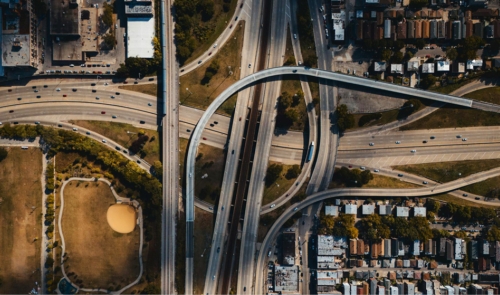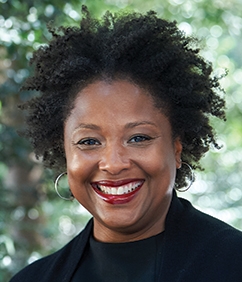Home improvement
Deborah Archer and Joseph Schottenfeld examine how the law neglects Black neighborhoods and advocate for new tools to protect them

Much of civil rights law has been aimed at giving Black Americans access to spaces and institutions from which they were historically excluded. It has been less successful at addressing harms in the places that Black people already inhabit, co-authors Deborah Archer and Joseph Schottenfeld write in “Defending Home: Toward a Theory of Community Equity,” a new article published in the University of Chicago Law Review in November 2024. In the paper, they advocate for a new legal framework, community equity, “that would aim to secure the equitable distribution of benefits and harms across communities; recognize the collective stakes and investments of [people] within a community; address the harms…to the community itself; and provide an opportunity for…the collective action of the community.”

Their article draws upon the legal efforts that the Civil Rights and Racial Justice Clinic has mounted in recent years in Sandridge, South Carolina, to fight a proposed four-lane roadway that would divide the historically Black neighborhood. Archer, Margaret B. Hoppin Professor of Law, directs the clinic, and Scottenfeld, assistant general counsel at the NAACP, teaches in the clinic as an adjunct professor. “Black communities have long been systematically segregated and sequestered, then intentionally sacrificed, to feed America’s growth and expansion,” the co-authors write. “The costs of old and new roads, development and sewage, power plants and efforts to respond to the challenges of climate change, all fall disproportionately on Black communities.”
New legal tools are needed to safeguard collective interests against the destruction that can accompany development, Archer and Schottenfeld argue. As a potential model for community equity, they point to public nuisance law: “Public nuisance and common law torts more broadly recognize that some rights can be commonly held by all [and] that some harms are best understood as directly affecting a community, rather than as the sum of the harms to a specific individual’s property or economic well-being.”
In weaving together concepts of race, space and place, their article delves into the pervasive abandonment of many Black neighborhoods like Sandridge. It also underscores how landmark Civil Rights-era laws of the 1960s have been unable to impact perennial problems in those districts.
“Black communities have long been systematically segregated and sequestered, then intentionally sacrificed, to feed America’s growth and expansion,” the report notes. “The costs of old and new roads, development and sewage, power plants, and efforts to respond to the challenges of climate change, all fall disproportionately on Black communities.”
At a time in which the Trump administration is drastically reducing the federal government’s regulatory footprint on issues ranging from the environment to education, Archer’s and Schottenfeld’s work highlights how long-neglected Black communities are now at a precipice. With Black neighborhoods grappling with a declining physical infrastructure, economic divestment, and environmental hazards of all sorts, the co-authors also stress that the potential for revitalizing communities still exist by supporting and investing in a largely untapped resource—its people. In a Q&A, Archer discusses her proposal for community equity, explains why civil rights laws have less impact on Black neighborhoods, and explains her vision for uplifting communities.
Can you talk about the decision to focus on this particular issue?
A lot of the work that Joe and I have focused on is the intersection of race, space and inequality—an area that I think does not get enough attention. When we are talking about civil rights and racial justice issues, people often focus on individuals—whether or not this person has access to an educational opportunity or whether this person has access to the mainstays of an economically vibrant life. But we pay less attention to the injustices that are inflicted on communities of color and how that impacts the lives of so many people within those communities. And so that’s one of the things that prompted us to start to think about how we categorize the injury and the tools that we are using to address it.
Through our advocacy in Sandridge, we found that the tools that were available to support communities were just not adequate. They weren’t up to the challenge that those communities were facing.
Your article spotlights some of the polices that were enacted well into the 20th century that resulted in the creation of segregated Black communities. Describe the purpose of outlining that history.
So many people look at these communities and they blame the conditions on the people who live there. But we have a very limited understanding of government-sponsored segregation. And if we expand our knowledge beyond racial covenants and redlining, it’s clear that it is not just the invisible lines created by local, state and federal law that divide us and that create these conditions. It’s really part of an architecture of racial inequality. And I think it’s important to say that.
It’s also important for us to understand how we got to where we are, to recognize the true history, and the impact that it continues to have today. We have to tell the stories about how the damage to these communities happened, how infrastructure led to economic disinvestment and neglect, and how the people who live there have been doing the best they can to build their communities without the support and resources that so many other places take for granted. It’s the people—whether they’re part of formal institutions like churches or informal networks with neighbors who look for one another—who really make up the daily fabric of the community. You have to be there to really appreciate how this spirit of collective support occurs block-by-block. But you can see it in Sandridge or Jackson, Mississippi just as much as you can see it in parts of Washington, DC or Brooklyn.
You and your co-author argue that the momentous Civil Rights Act of 1965 and the Fair Housing Act of 1968 fail to address Black communities. Can you elaborate?
So much of the way we view civil rights laws is about access to spaces that people of color used to be excluded from, and not enough about protecting the communities that sustained them over decades. The law is still focused on getting them access to [other] communities where they couldn’t gain entrance to. Even when there are challenges in their own communities, the law is focused on, “How do we facilitate your movement?” And not on, “How do we protect your communities?”
Another aspect is that the law is really poorly equipped to respond to the collective harms that are suffered by communities across generations and the devastation they’ve experienced. And they do an especially poor job protecting Black communities.
You call for reimagining Black neighborhoods under a concept called community equity. Can you describe it?
I think the communities are worth fighting for. The people who live there believe that they’re worth fighting for. And they’re full of a collection of neighbors who are ready to fight. But they need better tools and a better way to look at the problems that are impacting their community. Joe and I propose this framework of community equity, which tries to bring together threads around racial, civil, economic, spatial and environmental justice for these communities that have been impacted by segregation and oppression.
It rests on a couple of principles. One is [that] communities should benefit from what I would call intra-community equity with the institutions, relationships, and resources that sustain opportunity. And they should receive the advantages that low-income, and especially Black communities are often denied. But there should also be an equitable distribution of resources and burdens across communities. High-speed internet access, clean water and clean air, green spaces, and functioning public infrastructure are all in the long-term interests of the community.
If that is the goal, then we have to determine: how do we fight for it? And which legal and policy tools do these communities need to help them achieve that?
Your article also describes key aspects of the community ecosystem and the resolve of its residents. What do you see?
Communities in which people still look out [for] and take care of each other. They serve as a family in which someone’s home is not just their own apartment or their own house, but the whole community’s. And so when you start to tear at that community by removing one person, it’s not just that one person who’s injured, it’s the whole community.
People care about their community and want to fight for it. They’re devastated when a highway is coming through. When that happens, they’re losing neighbors, community institutions, churches, schools, and even the ability to walk down the street to visit with friends and family.
The signature achievement of the Biden-Harris administration was its $62 billion bipartisan infrastructure law. Is there a sense whether it is having the desired impact in some Black communities?
We filed a claim on behalf of Sandridge under the Biden administration that moved forward, but very slowly. And I suspect we won’t see any positive movement under the current administration. But in terms of “Build Back Better” and the infrastructure dollars, I know that a lot of that money has not been distributed and has not actually gotten out to communities because it’s complicated. It’s not about a one-time infusion of cash. It’s so much more layered and complicated than just a financial investment to repair the harm and make the communities more resilient. And so, part of it is—where our infrastructure is failing, we have to rebuild. But then you think about Flint, Michigan and its water crisis. It’s not only about what you put into Black communities, it’s what they have been deprived of and the kind of resources they don’t get.
The catastrophe and harm comes from decades of neglect. What these communities need takes many definitions and many forms. And so it’s important to think about how communities have been impacted and how we can help them.
With the role of the federal government being reduced in many sectors, where do you envision the most viable means of support for these communities coming from? Is it federal, state, local, or public-private initiatives?
All of the above. For this to work, everyone involved with shaping the future of communities—and this certainly includes those who are living in the impacted communities—have a part to play. There are advocates and community organizers who are providing the legal, policy and grassroots support. It is also federal, state and local policymakers who have a responsibility too. They have the power to design policies. And it’s mobilized residents who, themselves, are challenging unjust policies and pushing for fairer outcomes. In the end, to effect the type of change that I’m hoping to see, all of these groups—at all levels—have to be moved to ensure that racial, economic and spatial justice are prioritized.
If the neglect of Black neighborhoods that you describe in your report continues, what do you think will ultimately happen?
There are communities ready, willing, and able to fight. There are people who are invested in their homes and their communities, and they want to fight. But if we don’t support them, then we’re going to continue to see the erosion of Black communities. We’re going to see the erosion of economic opportunity. We’re going to continue to see the depletion of wealth and health challenges for people who live in these communities. We can help avoid this if we give them the tools and change the way that we engage with them.
Posted May 8, 2025

